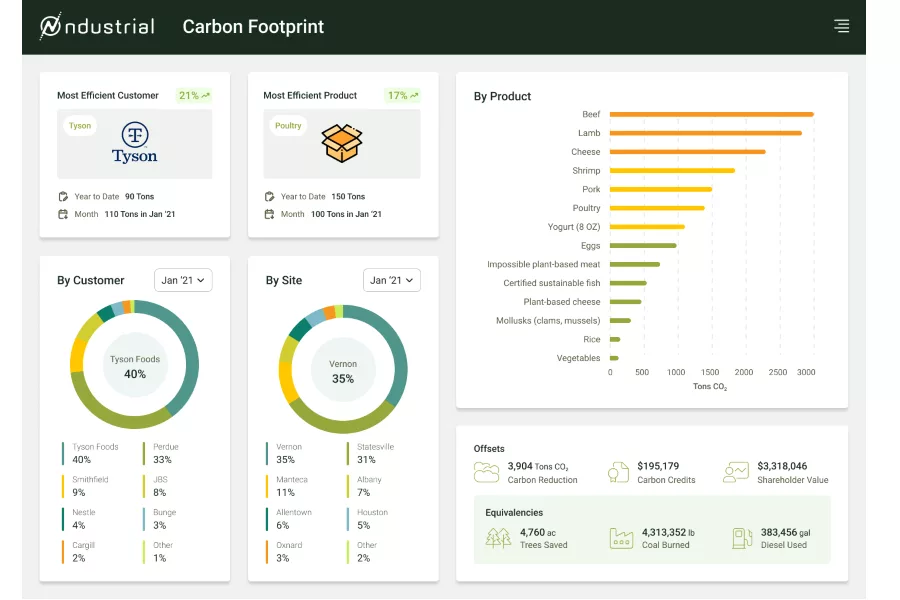Ndustrial shares new way to automate Scope 3 emissions

Ndustrial is expanding its software capabilities to capture and report Scope 3 emissions. CDP estimates that an organization's supply chains often account for more than 90% of their greenhouse gas (GHG) emissions, when taking into account their overall climate impacts.1 Leading food producers have implemented GHG practices that are reducing their Scope 1 and 2 GHG emissions and are now challenged to measure and reduce their Scope 3 emissions throughout their supply chain, including cold storage.
“If we ignore Scope 3 emissions, we’re only addressing a small percentage of the emissions linked to a business, and we’ll never get a full snapshot of a company’s carbon footprint,” said Daniel Goldman, co-founder and managing partner at Clean Energy Ventures. “In fact, Scope 3 emissions are 11.4x higher than direct, operational emissions.2 With many companies focused solely on Scope 1 and Scope 2 emissions, there is a missed opportunity to find and remove even more emissions as part of Environment, Social, and Governance (ESG) initiatives."
Whether freezing chicken products at zero degrees, blast freezing fruit at -20 degrees or simply refrigerating produce, the freezing and food storage processes for cold chain warehouses require massive amounts of electricity. Facilities reduce and control these Scope 1 and Scope 2 emissions by reducing the amount of energy required to store each product.
Scope 3 emissions—also referred to as value chain emissions—are the result of activities from assets not owned or controlled by the reporting organization, but that the organization indirectly impacts in its value chain, such as the transportation of goods by outside carriers or the storage of their products in a warehouse.
“One company’s Scope 2 emissions is another company’s Scope 3 emissions,” explains Jason Massey, CEO at Ndustrial. “To get to true Scope 3, leading enterprises will require their strategic suppliers to disclose data on GHG emissions and corporate governance. It will also require the ability to capture granular product-level data and establish a chain of custody to understand the full carbon impact of an organization.”
Looking for a reprint of this article?
From high-res PDFs to custom plaques, order your copy today!








